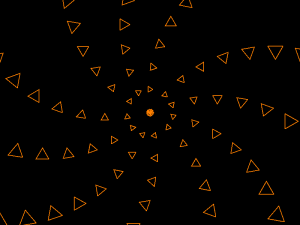‘Consider how we design our educational programs. We take the major subjects apart and reduce them to a number of main sub-sections. Then we subdivide the sub-sections. We continue until we have a large collection of little pieces that we believe that children can understand.
‘As a result we present our students with disembodied fragments of subject matter … fragments that they can’t possibly make sense of … fragments that they can’t use for anything. Most of them never sense the full power of the subjects that they encounter.’
via |Turtle Speaks Mathematics
turtle art
Turtle Art Galore…
Here is one for the Turtle Art!
The idea that the child should program the computer and not the other way round was initiated by Seymour Papert in his book Mindstorms. Papert calls the field constructionism instead of Piaget’s constructvism. Will elaborate the detailed differnces in some other post. But we at gnowledge.org lab are tryingto bring that in India using Sugar as a learning platform and we are not exclusively using OLPCs for that. We conduct regular teacher training workshops throughour India. One of our basic guidelies in all this is the use of Free and Open Source Software in education.
One of the first things that we introduce to newcomes in Sugar is the Turtle Blocks.
How to define Turtle Art? Well it is a studio! It has components of mathematics. logic, and art embedded in it. Artemis Papert [related to Seymour Papert?] has a website on the art that can be created using Turtle Art here www.turtleart.org
Have a look at the amazing gallery with the source code also available in case you want to have a peek at how such lovely pictures can be made using Turtle Blocks!!
Here is mine, adopted from the cover of the Turtle Art Book 3 by Artemis Papert.
And this is how I did it.



